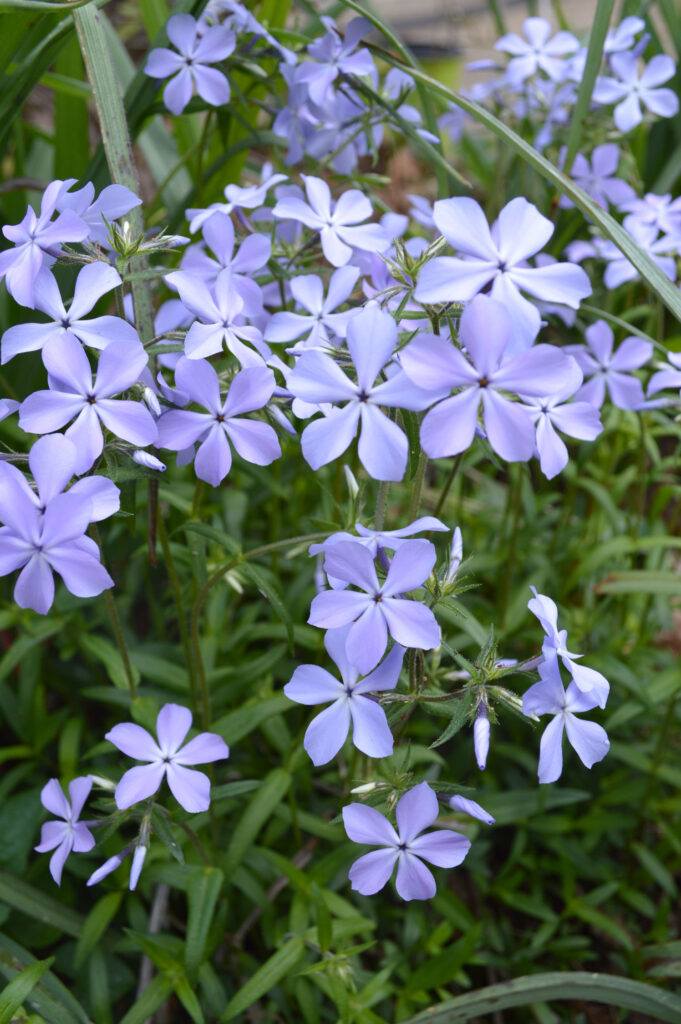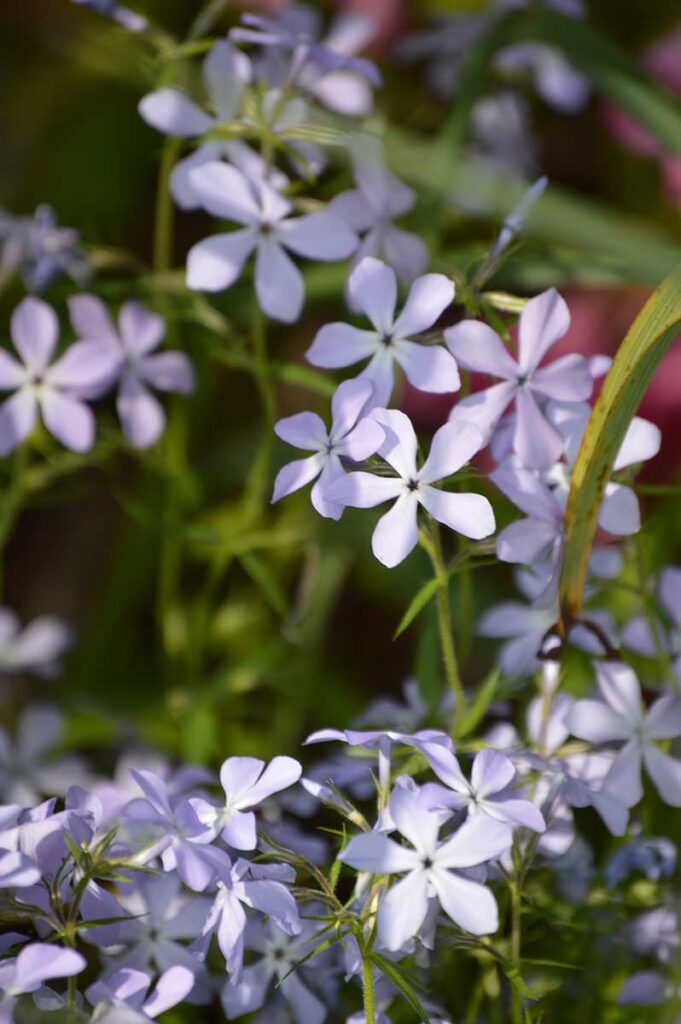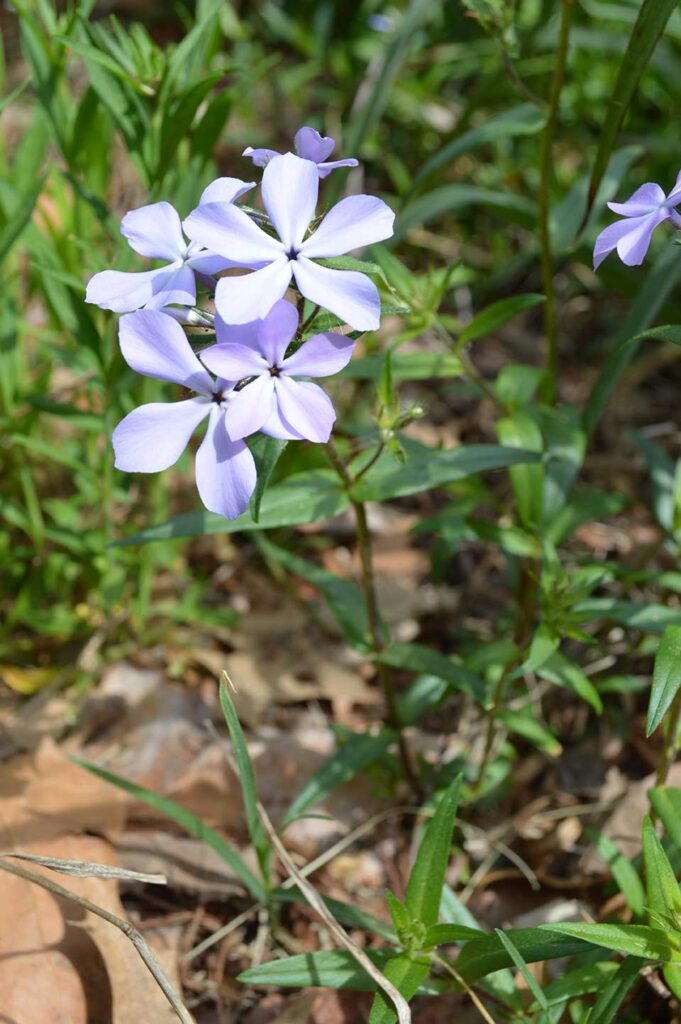As soon as the weather starts to warm, we begin to scour our garden for the first sign of flowers. The daffodils and crocuses are usually the first ones to show up, but if you want a carpet of color in early spring, a low-growing phlox is the way to go.
Woodland phlox (Phlox divaricata) forms dense clusters of delicate, fragrant blooms that brighten your landscape and attract butterflies.
This native phlox has soft blue flowers that transform your shaded areas into a sea of color each spring. It spreads each year, filling in bare soil spots and preventing growing weeds.

Woodland Phlox Flowers
Woodland phlox flowers are a little taller than the creeping phlox, ranging from 8 to as high as 20 inches tall. The flowers are produced in clusters and have five flat petals each. Flowers are produced starting in mid-March and ending in May. While this phlox’s most common flower color is blue to lavender, you can also find white or pink shades. If you remove dead flowers from the plant, it will encourage more blooms.
The leaves of woodland phlox are lance-shaped and low to the ground, while the stems of the flower clusters extend above the main body of the plant.
Native Range and Habitat of Woodland Phlox
Phlox divaricata, also known as wild blue phlox, grows in dappled shade in wooded areas, along streams, and in meadows with part-shade. It is native to the eastern U.S. from Texas east and north to Arkansas and Illinois all the way to Michigan and New York/New Jersey.
How to Grow Woodland Phlox
Soil, Light, and Water Requirements
This perennial phlox prefers well-drained soil rich in organic matter. It has medium water requirements and should be watered during periods of drought.
For the best show of flowers, plant them where they get morning sun and afternoon shade, particularly in states with high heat.
How to Propagate Woodland Phlox
The easiest way to make more woodland phlox is to dig up a small portion of the plant with roots and transplant it elsewhere. As a spreading plant, it will quickly fill in the new area. Keep the new plant well-watered for a few weeks, mix in compost into the soil, and mulch the top. You can also collect seeds to plant. It naturally spreads by rhizomes and seeds.
Wildlife Value
As an early source of nectar, the flowers of woodland phlox support butterflies. Small mammals such as voles and rabbits feed on its roots.
So, if you want a sea of light blue flowers in the shady areas of your garden in early spring, plant this low-maintenance native plant. The butterflies will thank you! Also, take a look at the ground cover creeping phlox for early spring flowers that butterflies love.


